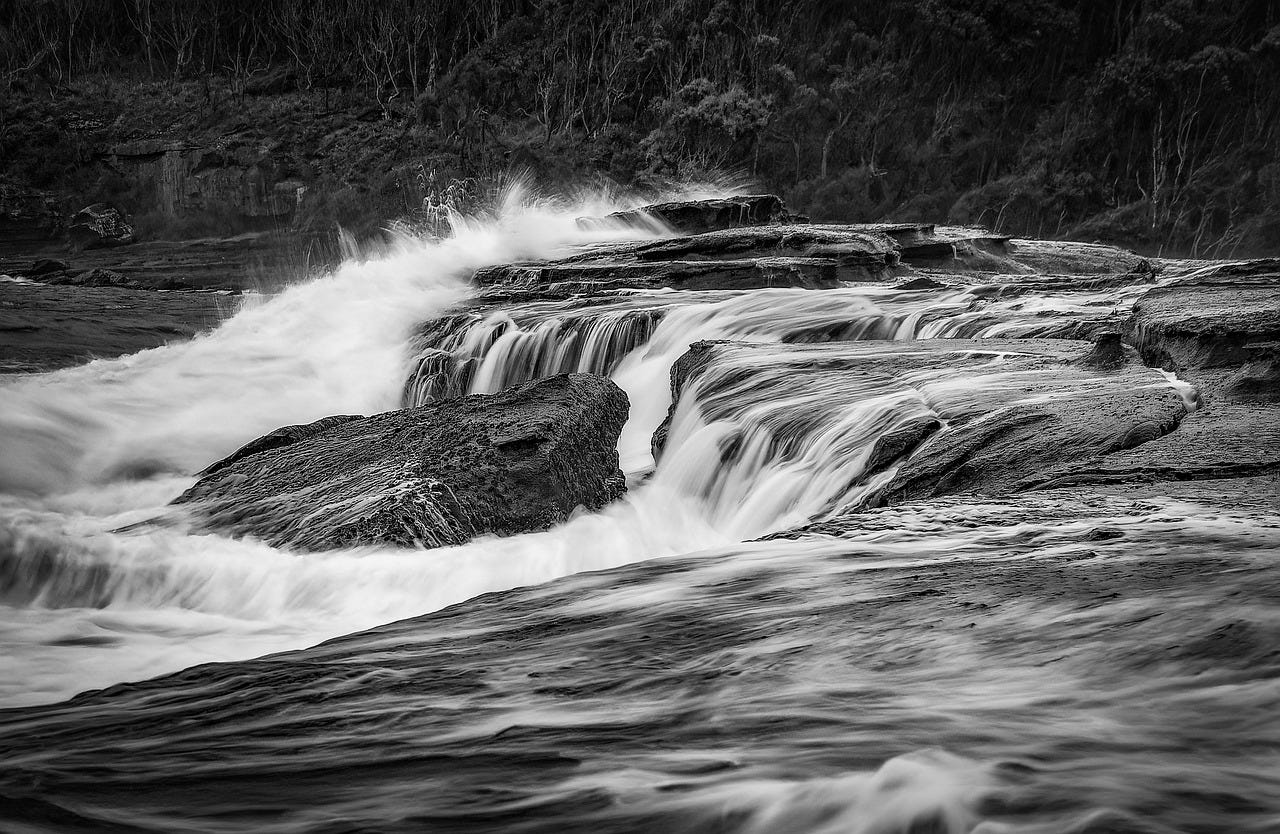The Unforgiving Beauty: A Vermont Tragedy and the Hidden Dangers of its Swimming Holes
Bartlett’s Falls is dangerous because of its variability. Its danger is conditional, depending on weather that may have occurred miles upstream.
BRISTOL, Vt. – On a hot Saturday afternoon, Bartlett’s Falls was crowded with people seeking relief from the first real heat of the season. It’s a familiar scene at the popular swimming spot on the New Haven River. But beneath the surface, the river, swollen by recent rains, moved with an invisible, unforgiving force. At about 5:10 p.m., the idyllic scene was shattered.
Eljak Menjwak, an 18-year-old from Burlington, jumped from the falls. According to Vermont State Police, he began to struggle the moment he hit the water. On the shore, his friends and other swimmers watched in horror as the river’s power became terrifyingly clear. They tried to reach him, but it was too late. In a few brief moments, a young man full of promise was gone, and a beloved swimming spot had once again become a place of profound tragedy.
There is a difficult truth about these cherished places. Vermont’s swimming holes are a celebrated part of the state’s identity, offering a promise of cool, carefree relief. But that promise is shadowed by a history of peril. The story of what happened at Bartlett’s Falls is not just about one tragic accident; it is about a recurring pattern of loss that asks for a closer look at the beautiful, and sometimes deadly, waters that flow through Vermont's communities.
The Power of the River
The horror at Bartlett's Falls unfolded with shocking speed. Drownings in real life are often swift and silent, a grim reality that played out in full public view on Saturday. One eyewitness, who had seen Eljak with his friends just moments before, described the sudden shift: "10 minutes later we saw everyone looking towards the falls and heard someone say 'call 911 he got sucked under'."
Friends and bystanders were helpless against the current. The first 911 call came in, and by 5:18 p.m., a massive emergency response was underway. State troopers, Bristol Rescue, and technical rescue teams from several local fire departments descended on the scene. But their mission had already turned from rescue to recovery. For nearly three hours, they searched. Finally, at 8:00 p.m., they found Eljak’s body in the river.
State Police have said the death is not considered suspicious. It was a tragic accident, a case study in the unforgiving power of a Vermont river in springtime.
Not All Dangers Are Created Equal
Saturday’s sad incident immediately brings to mind other tragedies at places like Bolton Potholes or Huntington Gorge. But lumping all swimming holes into one category of "dangerous" obscures the specific risks each place holds. Understanding the unique hazards of these locations is the first step toward preventing more loss.
Bartlett’s Falls is dangerous because of its variability. The New Haven River’s currents can change dramatically after heavy rain, turning a gentle swimming area into a treacherous trap. Its danger is conditional, depending on weather that may have occurred miles upstream.
Bolton Potholes, by contrast, holds a specific, scientific peril. Nearly every drowning there has occurred in a single pool known as the "Eagle's Eye." Plunging water creates a column of frothy, aerated water—water so filled with air bubbles that it cannot support a person's weight. Not even the strongest swimmer can float in it. This is what claimed the lives of UVM student Cody Surprise in 2022 and 20-year-old Samuel Paprin in 2023.
Huntington Gorge, meanwhile, is Vermont's deadliest swimming location for a reason. Its danger is geographical. The narrow canyon's currents can pull swimmers into underwater caves and crevices from which there is no escape. The gorge has claimed more than two dozen lives since the 1950s, including a State Police rescue diver in 1992.
A one-size-fits-all warning is not enough. To be safe, one must know the specific character of the water they are entering.
A Somber, Familiar Pattern
This was not a freak accident. It was part of a predictable pattern. Vermont averages eight unintentional drowning deaths each year, with state officials confirming at least one annual drowning at a recreational water spot. Over the years, Vermont's most famous swimming holes have accumulated a devastating toll, a history written in grief.
The Burden on First Responders
In the aftermath of such tragedies, familiar and vital safety campaigns emerge: "Water is Wild." People are told to wait 24-48 hours after rain, to never swim alone, and to know their limits. These messages, from Vermont Emergency Management and local non-profits like the Vermont River Conservancy, are crucial.
But what often goes unsaid is the profound human cost for those who answer the 911 calls. A single risky decision triggers a response that puts dozens of local volunteer firefighters, rescue squad members, and state troopers in harm's way. And it leaves a deep, psychological scar.
"I don't care about any of that [bravado] -- I'm the person who has to pull out their [body]," one fire marshal said with raw honesty after a near-drowning at Bolton. "I was shaken as fuck."
That trauma ripples through communities. It’s the anxiety a Bristol resident feels when they hear sirens heading toward the river. It’s the burden carried by the rescuer who has to make the call to a grieving family.
An Echo by the Water
These places cannot, and should not, be abandoned. They are part of what it means to be a Vermonter in the summer. But this tragedy is a reminder that they be approached with a new seriousness and a constant, conscious awareness. It is critical to understand that these are not swimming pools; they are wild rivers.




